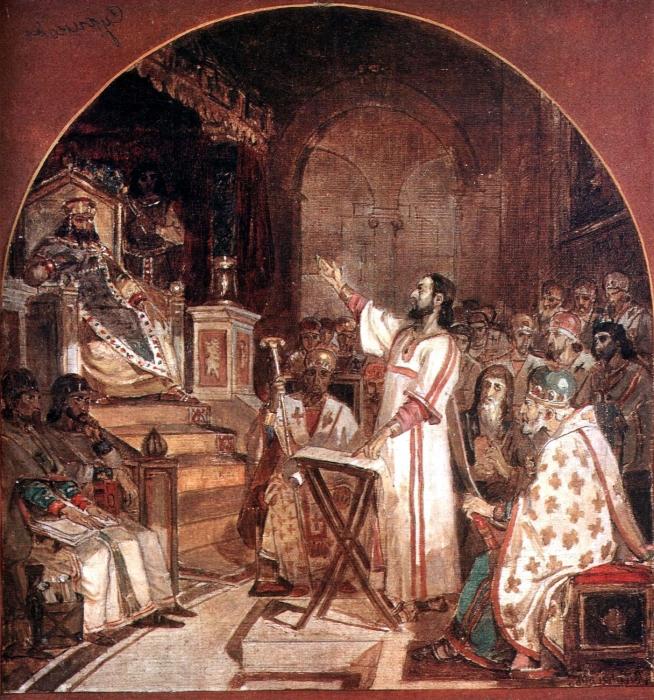When the days of paganism passed, when Christianity ceased to be persecuted and was recognized by the world religion, it would seem that all differences should be resolved. But at times, only ecumenical councils could resolve conflicts that could arise, refute heretical teachings - there was no peace even inside the Church.
The first Ecumenical Council was the Council of Nicaea, convened in 325. The reason was the widely spread teaching of the Alexandrian presbyter Arius. Its essence was the denial of the identity between God the Father and God the Son. He claimed that Jesus Christ was created by the Lord, but was not his embodiment. Such a thought fundamentally refuted all the dogmas of Christianity, and therefore initially the teaching of Aria was rejected by the Local Council. However, the proud presbyter refused to recognize the decision of the Council as legitimate and continued to attract believers to his side.
Then Emperor Constantine invited bishops from all over the world to the Ecumenical Council in the small city of Nicaea (now it is called Iznik and is located on the territory of modern Turkey). Some of the Church representatives present bore the marks of torture received in the name of true Christianity on their bodies. Bishops supporting Aria were also present.

The debate lasted more than two months. During this time, there were many discussions, speeches of philosophers, refinements of theological formulations. According to legend, a point in the altercation put a manifestation of a divine miracle. As a unity of the three principles, he gave an example of a clay crock: water, fire, clay give a single whole. Also, the Holy Trinity is essentially one God. After his speech, fire appeared from the shard, water appeared and clay formed. After such a miracle, the Council of Nicaea completely rejected the false teachings of Arius, excommunicated him from the Church, approved the Creed and established 20 rules of church discipline, set the date for the celebration of Easter.
But this Church Council has not put an end to this issue. The debate continued for a very long time. Even now, their echoes are still heard - Arianism formed the basis of the teachings of Jehovah's Witnesses.
In addition to the Council of 325, there was also the Second Council of Nicaea, convened by the
Empress of Constantinople
, Irina in 787. Its purpose was to abolish the iconoclasm that existed at that time. In fact, the empress made two attempts to convene the Ecumenical Council. But in 786, a guard broke into the Church of the Holy Apostles in Constantinople, where the Cathedral began work, supporting the iconoclasts. The Holy Fathers had to disperse.
Having resorted to considerable tricks, having dismissed the old guard, having gathered new troops, Irina nevertheless convened the Cathedral in 787, but transferred it from Constantinople to Nicaea. His work lasted a month, according to its results the veneration of icons was restored, they were allowed in churches.
However, this Council of Nicaea could not fully achieve its goal. Iconoclasm continued to exist. The victory of the iconoclastic movement was finally defeated only in 843, at the Council of Constantinople.